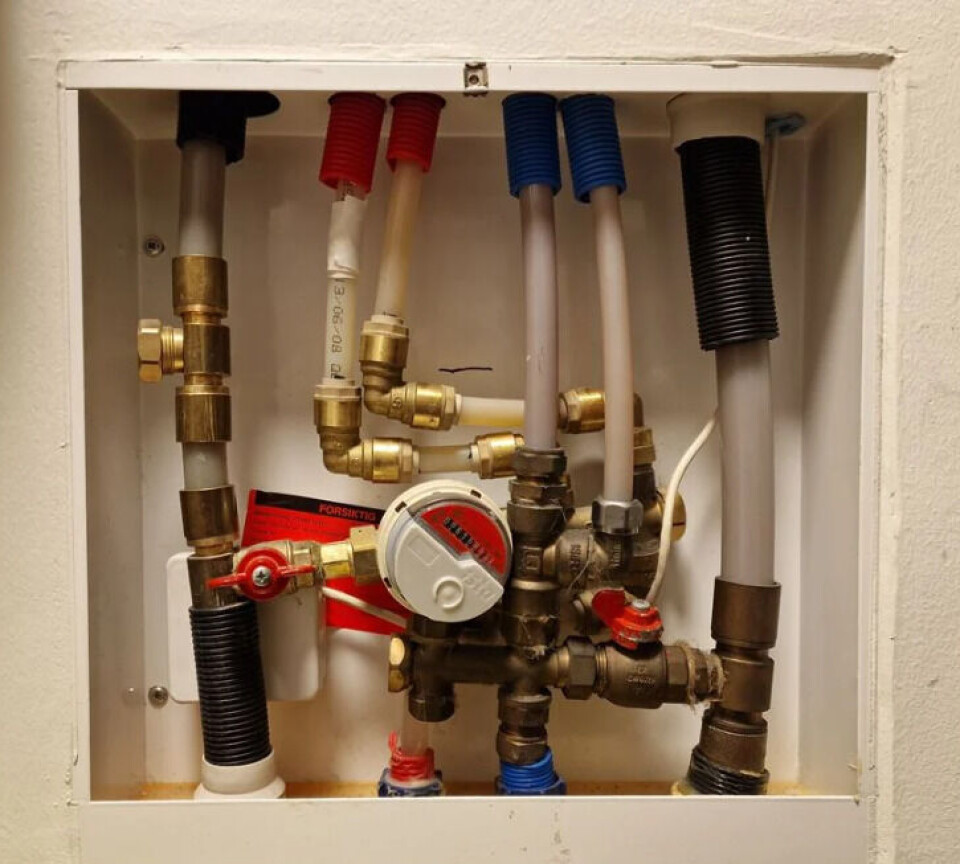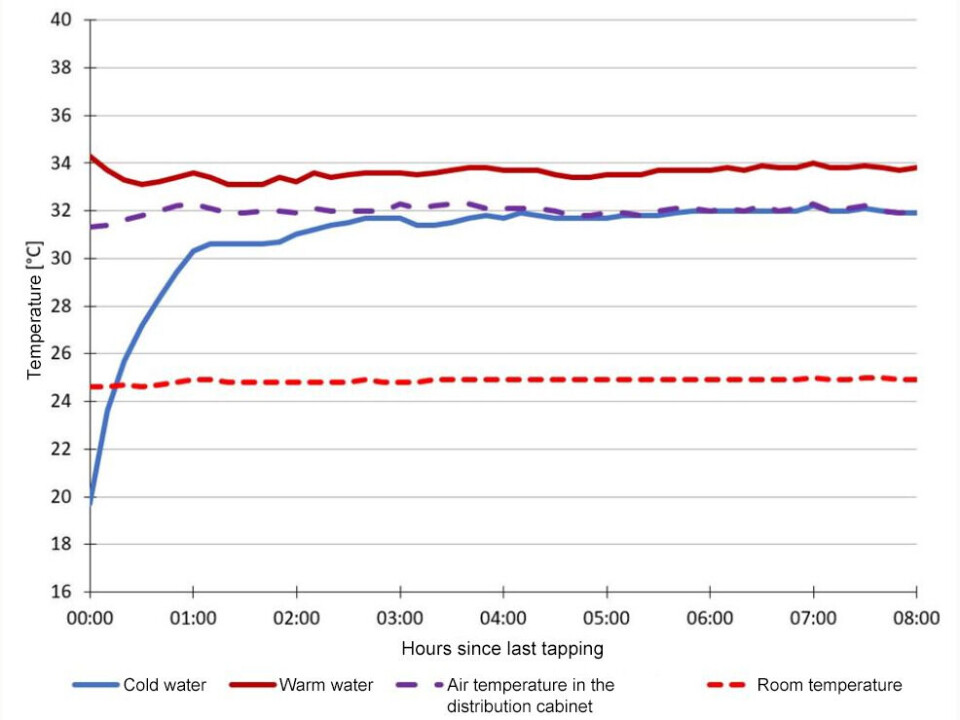THIS CONTENT IS BROUGHT TO YOU BY SINTEF - read more

The wrong type of plumbing can increase the risk of Legionnaires’ disease
Researchers have tested different types of water distribution cabinets.
Pipe-in-pipe plumbing systems on the Norwegian market are tested and approved through the SINTEF Technical Approval System. However, plumbing installed in connection with so-called combi-cabinets are not approved. These cabinets combine the distribution of both domestic tap water and water for floor heating.
This is due to the risk of the Legionella bacterium, which can cause serious lung infection that claims the lives of an unknown number of people each year.
The Legionella bacterium can attach itself to the biofilm that forms on the inside of water pipes, where it multiplies if conditions are favourable. Once the bacterium has settled in the plumbing system, it can be difficult to get rid of.
“A commonly used method is to flush the plumbing system with hot water. Unfortunately, recent research indicates that this has little effect,” Dag Fredrik Nedberg says. He is an adviser at SINTEF Community.
Tested different types of distribution cabinets
In a pipe-in-pipe system, it is usually in the distribution cabinet that hot and cold installations affect each other. To investigate how different cabinet solutions affect the temperature in stagnant cold water, researchers have compared the results of field measurements carried out in different types of distribution cabinets.
The poorest performers are the combi-cabinet systems, in which tap water and water for underfloor heating are installed side by side. Not surprisingly, the underfloor heating system emits a lot of heat. This causes the temperature in the cabinet to rise to as much as 40 °C, which is right in the most favourable temperature range for the Legionella bacterium.
Tap water is heated rapidly to the same temperature, and if the water remains standing in the system for a few days, this will provide excellent growth conditions for the bacterium.
Other types of distribution cabinet may also provide favourable conditions for bacterial growth, such as those connected to riser pipes, which are commonly installed in tall buildings.
In tall buildings, water rarely stands still in the riser pipes, and there is a constant supply of new hot water that heats up the distribution cabinet.
The researchers' measurements showed that this type of cabinet maintained temperatures over 30 °C throughout a 24-hour period, providing ideal conditions for the Legionella bacterium.

Keep the water as cold as possible
The prevention of bacterial growth is thus all about maintaining the correct temperature conditions in the water pipes. Cold water should be kept at low temperatures, ideally below 20 °C. In practice, this quickly becomes complicated, since water that stands still in the pipes over time will reach the same temperature as its surroundings.
According to SINTEF, cold water should be kept as cold as possible and never be allowed to become warmer than room temperature, regardless of how long it remains standing in the plumbing system.
In order to achieve this, we must ensure that the cold water is not heated by other installations in the building. The best approach is to make sure that systems required to supply hot water are isolated as much as possible from cold water installations.
‘Standard’ water distribution cabinets, which supply only hot and cold tap water, performed surprisingly well during the SINTEF investigation. Even if the hot water system releases some heat, the temperature in the cabinets remained only a few degrees above room temperature.
“If we are to completely avoid heat transfer in our tap water systems, the best approach is to install the hot and cold water systems in separate cabinets. However, we believe that standard distribution cabinets accommodating both hot and cold tap water represent an acceptable solution,” Dag Fredrik Nedberg says.
More content from SINTEF:
-
Propellers that rotate in opposite directions can be good news for large ships
-
How Svalbard is becoming a living lab for marine restoration
-
New study: Even brand-new apartments in cities can have poor indoor air quality
-
Fresh hope for patients with chronic inflammatory bowel disease
-
Testing a giant ship: May take five kilometres to stop
-
A robot is helping researchers hunt for the best cancer warriors





































